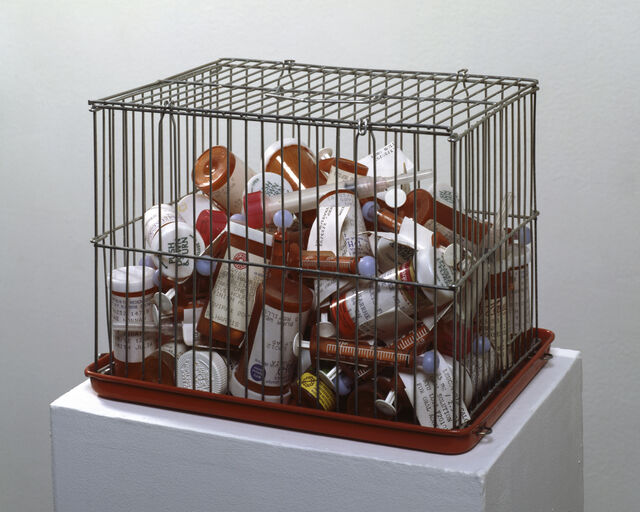
"Why Not Sneeze" Hannah Wilke, 1992.
Wire bird cage, medicine bottles, syringes
The question "Why not sneeze?" begged by Duchamp's original work of art is meant to be a type of rhetorical question. Sneezing is an involuntary bodily function, and so there is no point in asking questions about sneezing, as if a person has any control over whether they sneeze or not. I believe this idea of involuntary bodily functions is seminal to Wilke's work. In her work, the question "Why not sneeze?" serves as a sort of ideological placeholder for any other involuntary bodily function. For people with chronic illnesses or disabilities, some of their bodily functions are outside of their control, but the dominant narrative around disability is that these people have some form of control over their disability, or what their bodies can do. Wilke is saying that she is not in control of her body as much as people would think, and to suggest that she can control these things is as nonsensical as asking someone to control how they sneeze.
I like the connection that you create between the involuntary sneezing and the illness that one might have with zero control over. This is a strong connection of topics an relevant for the art piece but I think you dont stablish this from the beggining. Towars the end the review becomes better, maybe take some of that to the begging.
ReplyDelete